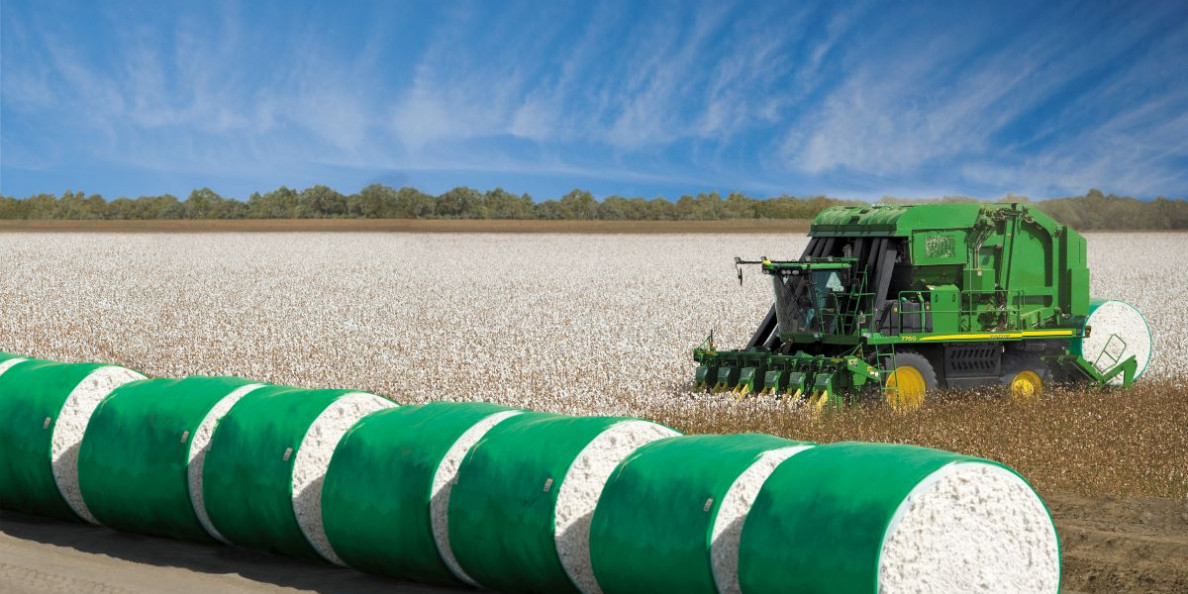By Jeff Thompson, Autauga Quality Cotton Association
The market began last week at 62.36 with many fearing follow through selling after the previous significant late week decline. Fortunately, such fears were unfounded though not a smooth ride by any means.
With little in the way of surprises on the geopolitical scene, the week’s trading was more influenced by crop condition concerns, the August Supply/Demand numbers, and export sales.
Though each pulled the market in different directions, a degree of confidence can be gained in that it was able to post a small gain closing at 62.85. This kept the uptrend intact as well as the Funds/Spec community comfortable in their long positions.
Hot drier conditions became more widespread across the cotton belt. As a result, cotton is maturing rapidly with all but the late planted cutting out. To reach its maximum potential, this crop desperately needs some additional rain to fill out late bolls and prevent shedding.
Nevertheless, where there is ample moisture yield potential is scary good; however, overall, the crop has gone backward in the past few weeks. Illustrative of this is the crop conditions report where in the last four weeks the good to excellent rating has fallen from 49% to 42%.
At the same time, the poor to very poor has risen from 16% to 23%. This was largely responsible for Monday and Tuesday’s 100-point advance.
On Wednesday, USDA released its monthly Supply/Demand report. The August numbers are always much anticipated because they’re derived from actual field surveys.
Aware of these deteriorating field conditions, most market pundits thought U.S. production would be closer to 17 million bales as compared to last month’s projection of 17.5 million. USDA undoubtedly sees things differently for they surprisingly raised production to over 18 million bales.
This in no way correlates with the above-mentioned crop conditions. Looking further at the state by state yield estimates, I can’t ever recall seeing as many states projected to average over two bales an acre at this time of year, nine out of the fifteen in this case.
A Lid On Prices – Easy To See Why
Being an agronomist by trade, I know just how difficult a task this is despite today’s improved technology. It will require everything falling perfectly into place going forward. As for lower consumption, no one disputes this given the impact COVID-19 continues to have on world economies.
Considering higher production and lower consumption, the most telling number is world ending stocks, which were increased by 2.1 million bales over the previous month and projected to be 4.4 million bales higher than last year.
It’s easy to see why there is a lid on prices when we have almost a year’s supply in the pipeline before the first bale is harvested. Not surprisingly, the market fell 129 points following this report.
Export Sales Struck A Positive Note
To our benefit, Thursday’s export sales proved to be more bullish even though weekly new crop sales were a paltry 6,900 bales. However, it did indicate over 2.8 million bales of unshipped old crop sales were rolled into new crop.
This was welcomed news as fear of cancellations had been hanging over this market for months. The takeaway here is we begin the 2020/21 marketing year with 6.7 million bales sold as compared to 7.6 million the first week of 19/20. Though slightly behind pace, it’s still early.
If the Phase One deal with China remains intact and some semblance of economic recovery can be seen, we could surpass our export estimate of 15 million bales. In any event, this was a positive sign as the market recaptured 80 points.
Speaking of China, trade representatives from both the U.S. and China were expected to meet Saturday (8/16) to review Phase One progress. This will be watched carefully, but as of now, there is no indication trade will be disrupted despite growing tensions between the two countries.
Where do prices go from here? At the risk of sounding like a broken record, we are caught in a trading range where firm support is found at 62 cents while conversely 65 cents is posing just as formidable a resistance level.
Watch these two numbers carefully for a close outside of either could challenge the next support below 60 cents or resistance at 67 cents. As mentioned before, consider the mid 60’s an excellent opportunity to begin pricing new crop if you missed the previous attempts.


